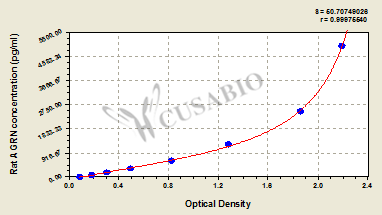The Rat Agrin (AGRN) ELISA kit is a reliable and accurate tool for measuring Agrin protein levels in samples from Rattus norvegicus (Rat). Agrin, encoded by the AGRN gene, is a protein that plays a crucial role in the development and maintenance of the neuromuscular junction.
This ELISA kit provides a simple and sensitive assay to quantify Rat Agrin in serum, plasma, and tissue homogenates with a detection range of 78 pg/mL to 5000 pg/mL and a sensitivity of 19.5 pg/mL. The assay can be completed in just 1-5 hours, making it an efficient and convenient tool for research purposes.
The Rat Agrin (AGRN) ELISA kit requires a sample volume of only 50-100 µl, minimizing the need for large sample sizes. Detection is performed at a wavelength of 450 nm, with results displayed in a standard curve format.






